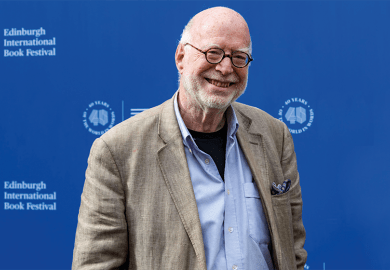The Tate Modern is hosting a major exhibition of the work of Mark Rothko. It is, by any measure of art exhibitions, both generous in its inclusiveness of Rothko's work and in its invitation to consider an artist's ideas. The curator, Achim Borchardt-Hume, did not exaggerate when he described the exhibition as "historic" and "stunning".
But those adjectives are part of the challenge of the Rothko exhibition, since while we might agree, we need to know why those adjectives are appropriate.
It is also pertinent to consider the Rothko exhibition in the context of much of the undergraduate teaching in today's universities, teaching that emphasises the ability to summarise and reassess information rather than to consider the unfamiliar and step across disciplinary lines.
So great is the pressure to impose on teachers rigid frameworks of what is "essential" to a particular discipline that it is worth asking whether or not we actually enable students to extend their understanding of the world (and their ability to speak about it) or merely regulate their engagement with certain versions of the printed word. A challenge to fixed boundaries is what confronts us in Rothko's work.
Crucially, the sublime impact of Rothko's work involves subsumption: where the disciplinary powers of the wall, the frame, the eye and the line all tremble with the threat of those boundaries being crossed.
These boundaries traditionally act to divide the world and the work. Rothko breaches those divisions. As educators, what we can learn from our encounter with Rothko's last great works is that they reach out into the world of the participatory subject and push at regulating divisions.
Without digesting these lessons, and possibilities, students who encounter "big ideas", especially outside their own disciplines, are merely grazing in the presence of greatness. This was precisely the reason that Rothko withdrew his Seagram Murals from the Four Seasons restaurant: having once encountered the elite conspicuous consumption of the restaurant, he had no wish for his work to become the background for the performance of class privilege.
Many in education can empathise with Rothko's displeasure at the fate of the work he had laboured so hard to create. Many would also no doubt be delighted to see the rewarding and the inspired from diverse disciplines appear at the centre of students' encounters with ideas rather than as mere attachments or "background" to rigorously maintained disciplines. Yet, while the Rothko paintings are for a general audience, the ways in which the world and education work often separates people, socially and in terms of comprehension, from the works themselves.
Our lack of encounters with ideas outside our own disciplines produces the kind of judgments about the unconventional in art that can only deride the idea of the pile of bricks or the unmade bed as "art" or sees art only in terms of its value as a commodity. What we cannot understand we interpret in the values of the market-place or convention.
In this retreat we become part of those divisions in the contemporary world that impoverish the world for us all. Experts in art criticism write about Rothko much as experts in other disciplines write about their subject matter. In this, and in the technical language that is often part of this writing, we all lose: we approach art or the social world as unknowable. But there, hanging on the walls of the Tate Modern, are sophisticated explorations of concepts about boundaries and the complexity of ideas.
Universities often pay lip service to the idea of interdisciplinarity and in doing so can "reduce" works of the imagination to examples of more tangible social events. The authoritative appreciation of the possibilities and the recognitions of art tends to remain cloistered in its own disciplinary world, a world that, in common with other academic disciplines, values above all else the power of the word.
As undergraduates open their textbooks to study "their" subject, there surely remains a place for the encouragement of engagement with the unfamiliar and the unknown, an exercise that might question the limits of words.
Register to continue
Why register?
- Registration is free and only takes a moment
- Once registered, you can read 3 articles a month
- Sign up for our newsletter
Subscribe
Or subscribe for unlimited access to:
- Unlimited access to news, views, insights & reviews
- Digital editions
- Digital access to THE’s university and college rankings analysis
Already registered or a current subscriber? Login



